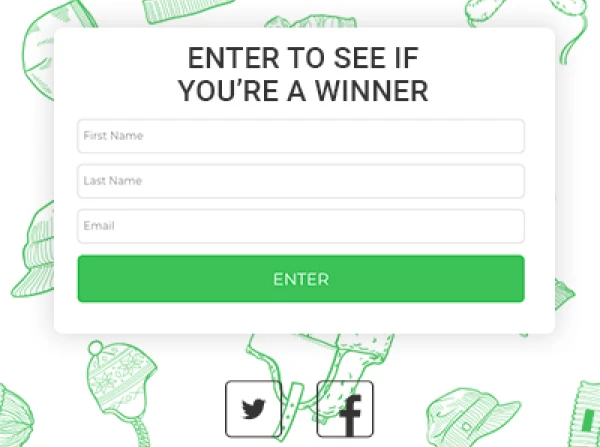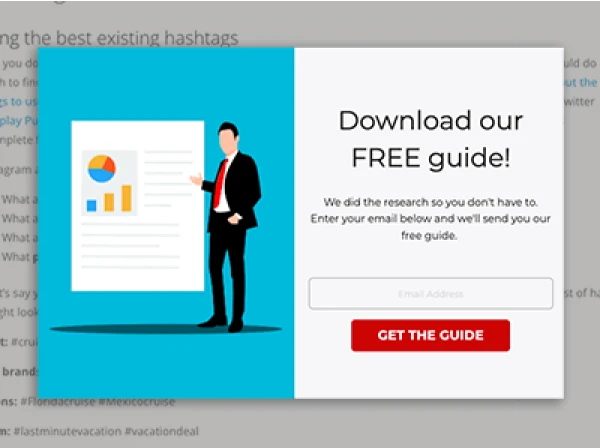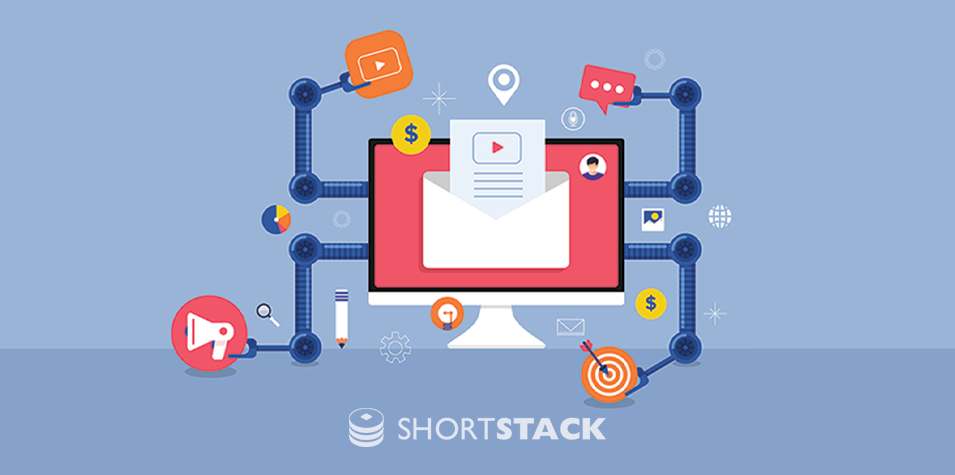Marketing professionals recognize social media contests as one of the most popular and effective ways to gather data from users and consumers.
But what types of data are brands collecting?
And what does the data they’re collecting say about the marketing industry now?
To answer these questions, we analyzed a database of nearly 1 million promotion forms that brands around the world have created using ShortStack.
DETERMINING THE MOST VALUABLE FORM FIELDS
Most contests require a promotion form that includes a variety of fields entrants must fill out in exchange for a chance to win (Facebook Timeline contests are one exception). When marketers are building their forms, they have to decide on the key pieces of information that will be the most valuable to them.
Examples of questions marketers should ask themselves when deciding what form fields to include:
• What types of data do I want to gather from my brand’s contest entrants?
• What insight will such data give my brand, and how can I use that insight later?
• What types of data do I need to collect in order to accomplish my brand’s other marketing efforts and/or goals?
WHAT TYPES OF DATA ARE BRANDS COLLECTING?
Marketers are careful to select contest-form fields that will be the most valuable to them.
Knowing this made us ask a few questions of our own:
• Can the types of entry fields a brand uses for their contest’s promotion form affect the success of the contest?
• What are the form fields brands used most frequently in successful contests? What do the results say about the future of marketing?
• Broadly speaking, what types of data are brands most actively trying to gather via their online contests? Since January of 2011, nearly one million Campaigns have been built with ShortStack — the majority of which have been contests/promotions. To learn which form fields are the most valuable and what kinds of data brands are collecting, we dug into ShortStack’s massive database.We analyzed more than 850,000 promotion forms that were built with ShortStack to find out, on average, which standard form fields (email, name, “Login with Facebook,” “Agree to terms,” phone, city/state/zip, address, age, country) brands use most. This information gives us insight as to the kinds of data marketers are interested in collecting.Next, we looked closely at our top 100, 50 25 and 10 databases — these databases represent the contests that have received the most number of entries.
Here’s what we learned:
STATISTICS FROM ALL CONTESTS IN SHORTSTACK’S DATABASE
• 94.7% of brands use their promotion forms to collect an email address.
• 79.35% of brands use their promotion forms to collect a name.
• 45.77% of brands include “Login with Facebook” on their promotion forms.
• 31.59% of brands include “Agree to terms” on their promotion forms.
• 31.37% of brands use their promotion forms to collect a phone number.
• 9.14% of brands use their promotion forms to collect city, state and zip code information.
• 8.53% of brands use their promotion form to collect a mailing address.
• 5.88% of brands use their promotion forms to collect an age.
• 3.57% of brands use their promotion forms to collect country information.
STATISTICS FROM OUR TOP 100 MOST SUCCESSFUL CONTESTS
• 96% of brands use their promotion forms to collect an email address.
• 86% of brands use their promotion forms to collect a name.
• 54% of brands include “Agree to terms” on their promotion forms.
• 38% of brands use their promotion forms to collect city, state and zip code information.
• 40% of brands use their promotion forms to collect a phone number.
• 28% of brands include “Login with Facebook” on their promotion forms.
• 26% of brands use their promotion form to collect an address.
• 14% of brands use their promotion forms to collect an age.
• 8% of brands use their promotion forms to collect country information.
STATISTICS FROM OUR TOP 10 MOST SUCCESSFUL CONTESTS
• 100% of brands use their promotion forms to collect an email address.
• 90% of brands use their promotion forms to collect a name.
• 50% of brands use their promotion forms to collect a phone number.
• 50% of brands use their promotion forms to collect city, state and zip code information.
• 40% of brands use their promotion form to collect an address.
• 30% of brands include “Agree to terms” on their promotion forms.
• 10% of brands use their promotion forms to collect an age.
• 10% of brands include “Login with Facebook” on their promotion forms.
• 0% of brands use their promotion forms to collect country information.
THESE STATISTICS HELP DETERMINE BEST PRACTICES
There are three key insights that can be pulled from our statistics.
Insight #1: Email Addresses are the Most Sought After Info
It’s obvious from our data that collecting email addresses is the top goal — brands find this information even more valuable than entrants’ names. The more successful the contest, the more likely an email address was the means of entry: One hundred percent of the 25 most successful ShortStack-built contests required entrants to share an email address.Even as social media becomes more and more ubiquitous, and numbers of followers/fans become evermore important KPIS, collecting email addresses still reigns. As marketing expert, speaker and author Porter Gale says, “Your network is your net worth.” And in marketing, there’s no better — or more valuable — network than an email list. One brand from our top 10 list that understands the importance of growing their email list — and used a ShortStack contest to build it — is Mrs. Butterworth’s. The iconic syrup brand hosted a sweepstakes that promoted the opportunity to win a free family trip to Busch Gardens. To enter to win, people had to share their email, name, city/state/zip, and answer a couple of questions about Mrs. Butterworth’s products.As a result of Mrs. Butterworth’s sweepstakes, the company gathered 184,217 email addresses, along with other valuable data and product feedback.
Insight #2: Brands are Focused Less on Facebook, Even for Contests
A few years ago, when a business hosted a contest it was almost always placed on Facebook exclusively. The brand would host a contest on a Facebook tab (aka app) and integrate Facebook features like a “Like” button or “Login with Facebook” button as required steps for a person to be entered to win.We’re now seeing a new trend, in which brands are stepping away from Facebook, at least when it comes to contests. And, according to our data, brands that are hosting their contests away from Facebook get more campaign visits.
On average, 45% of brands that have created a promotion form have included “Login with Facebook.” And, again, if you look at tighter segments of the most successful ShortStack-built contests, there’s a dramatic decrease in brands using “Login with Facebook” for their promotion forms. Just 28% of our top 100 and 50 most successful contests use “Login with Facebook.” That percentage then drops to 24% when you look at our top 25 most successful contests, and drops again to just 10% when you look at at our top 10 most successful contests. We know “Login with Facebook” does not solely determine a contest’s success, there are other variables that may explain why brands are reducing their reliance on Facebook. We theorize:
• Brands want to attract an audience that is not on Facebook.
Brands that have a young target market are looking for alternative ways to capture their audience’s attention. Why? Recent studies are showing a shift away from Facebook with the younger demographic. According to iStrategyLabs, by January of 2014, the number of U.S. Facebook users aged 13 to 17 had declined more than 25% from the beginning of 2011. The decline continued through 2014, with a poll by Frank N. Magid Associates revealing that just 88% of U.S. teens use Facebook, compared with 94% in 2013.
• “Likes” are not the focus anymore.
In recent years, marketers and Facebook have started to look for actionable data. Instead of focusing on “Likes,” and implementing practices like “Like-gating” — which Facebook banned as of November 5, 2014 — marketers are collecting valuable information from more than just their Facebook audience.
• Brands want to leverage other social platforms to reach more people within their audience.
Most brands nowadays have a presence on more than one social network. To save time and, most important, to improve the reach and performance of their contests, brands are hosting their contests on campaigns that are independent of specific social networks. They then promote their one campaign across all their social channels.One great example of a brand that employs this strategy is Zipcar UK. One of Zipcar UK’s biggest issues with Facebook-hosted campaigns was that a significant percentage of their customers couldn’t enter their promotions because they didn’t have Facebook profiles. To solve this issue, Zipcar UK started hosting their promotions on a web-hosted campaign they built using ShortStack.
In June 2014, Zipcar UK ran a Facebook-hosted promotion for which they were looking for members and non-members of Zipcar UK to test drive cars in a new city. When they ran the same promotion in September on their website, Zipcar UK saw a 717% increase in entries into their competition the second time around. In addition to seeing a boost in entries, Zipcar UK also saw a 203% increase in page visits on their website. This is largely due in part to driving their audience to a property which they owned, versus directing their audience to Facebook.
Insight #3: Form Field Types Do Not Affect the Success of a Brand’s Contest
One question we wanted to answer by analyzing ShortStack’s database was whether the types of entry fields brands used for their contest’s promotion forms could affect the success of their contest. This question remains unanswered as their are too many variables to consider. One of those variables is a contest’s prize. After analyzing our top 100 most successful contests, one thing is clear: the brands that gave away high-value prizes that were relevant to the wants and interests of their audiences. One key insight here is that offering a relevant and valuable prize is an essential component to a successful contest.
CONCLUSION
Marketers continue to use their brands’ social media channels to promote contests, which allow them to gather valuable data about their audience. For the vast majority of marketers who are creating promotion forms, email addresses are the most sought after data. In recent years, Facebook has become less critical for brands hosting online contests. In addition to catering less to Facebook, brands with experience hosting successful contests, are giving away prizes that are high value and relevant to their audience.To build your brand’s next social and mobile-ready contest, try ShortStack for free.
About the author
Dana Sullivan Kilroy is a communications professional with more than 20 years of experience delivering compelling content. Her work has appeared in national, award-winning publications and sites, including: The New York Times, The Los Angeles Times, The Wall Street Journal, USA Today, and Fast Company, Inc.
Recent posts
Go back to blogGet marketing tips straight to your inbox
Launch an irresistible giveaway. Get started for free.
Join 630.000+ marketers that are boosting engagement and sales.













